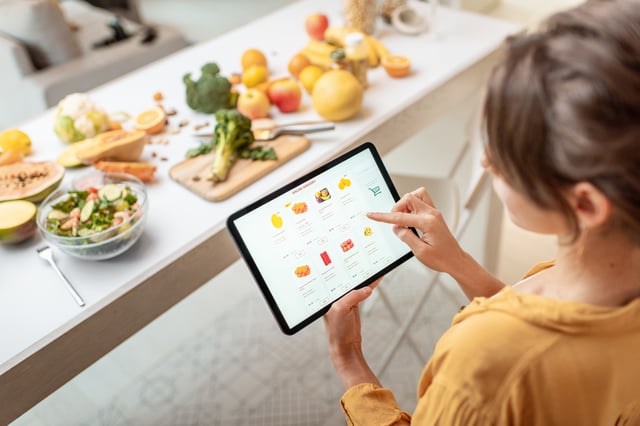How Grocery Stores Can Thrive in the Age of E-Commerce
Grocery shopping has changed drastically over the past few years. The online grocery sales industry alone grew by 17.4% per year between 2017 and 2022. In fact, it’s projected that two-thirds of consumers will do more than half of their grocery shopping online within the next decade. For an industry that prides itself on in-person service aided by face-to-face interaction, the rise of e-commerce is changing everything. Here’s what grocery stores and food brands should consider when it comes to prioritizing strategies and effective marketing opportunities.
The Act of Discovery
In the past, brands would pay to have prominent placement on shelves and end cap displays. However, with most consumers turning to online grocery shopping by 2033, grocery stores must place a strong priority on digital discoverability. Instead of walking through stores, customers are now scrolling online and on social media for suggestions. Brands need to know how to show up.
[Read more: "How Kroger and Instacart Build Ideal Shopper Experiences"]
Discovery happens by providing personalized recommendations in the spaces that consumers already frequent. One study found that 83% of customers would be open to receiving more suggestions about new products, as long as they’re relevant to their needs.
Using the information available from digital marketing tactics will be crucial to providing a customized discovery experience. Gather data surrounding past purchase history, time spent on certain platforms and search patterns to help engage your customer base in a new and meaningful way.
No longer can grocery stores solely rely on time spent browsing aisles. Rather, in the age of e-commerce and digital experiences, brands must refocus on providing exclusive connections to their customers with unique offerings that meet them where they are.
Find the Right Channel
This all begins with finding the right channel to communicate with your consumers. While digital marketing tactics like social media posts or paid ads are beneficial, they’re nothing without relationships. The first step for brands is to listen and identify customer needs. Boosting posts about a particular product on Facebook won’t go very far if your key demographic spends more time on TikTok or Instagram.
Do the research and build relationships with your customers. Then, leverage the channels where people are spending the most time. Look for tactics that are a combination of organic and paid opportunities. Social media avenues such as YouTube, Facebook, Instagram, and TikTok can all provide you with significant reach potential to serve your customer base.
When done well, these types of online tactics help you gather more data to build a better understanding of your customer. Approximately half of consumers consider online to be more personal, with ads focused on their specific needs as opposed to in-store displays. This represents a significant increase from previous years, signaling a shift in consumer behavior that grocery brands would be wise to consider.
Take a Chance in New Spaces
Once you have established a strong digital presence based on existing customer research and preferences, take the opportunity to try new things. The world of social media and online marketing is constantly changing, and the newest thing is just one click away.
Take, for instance, Threads, Meta’s text-first social platform. Within a week of its debut, the app saw the fastest growth of any new social platform in history, adding a reported 100 million users in just five days.
Opportunities like this come quickly, and grocery brands should be prepared to embrace the opportunity. To stay competitive, make sure you’ve honed your message and how to best convey it to consumers. By having a solid understanding of your central brand talking points and your ideal customer, you can look for ways to embrace new tactics like Threads to place your establishment in front of potential customers in a strategic way.
Rethink Your Physical Space
The results of the pandemic and changing consumer demands mean that fewer and fewer people are walking inside grocery stores to do their shopping. In the age of “add to cart” clickability, rethinking the physical layout and build of a store will also be important.
Stores have the potential to become more of a showroom, with an emphasis on product interaction. While packaged goods are easy to pick out online, fresh goods like produce or meat are better chosen in person.
Encourage experiences where individuals can talk to the experts, whether it’s asking the butcher about a certain cut of meat or what type of wine would pair well with a particular cheese. Discoverable moments don’t have to happen only online – look for ways to give your customers multiple ways to purchase a product.
The Future of Grocery Marketing in the Digital Age
The beauty of an e-commerce environment rests in the data that any business can gather to make strategic decisions about its ideal client. Prioritizing individualized recommendations and building relationships through custom interactions enable grocery stores to provide a retail experience that will withstand future shifts in buying trends.






